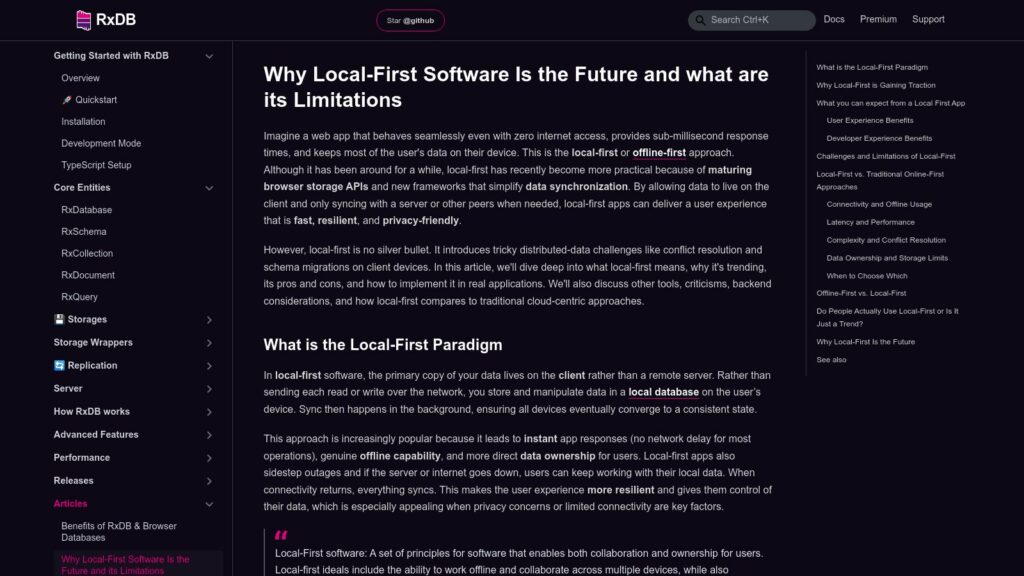Local-first software keeps user data primarily on the client side, enhancing performance, privacy, and offline usability. It's gaining traction due to improved browser storage limits, new APIs for efficient file management, and advances in tools like RxDB. While offering advantages like reduced server load and instantaneous user experiences, local-first also faces challenges in data synchronization, conflict resolution, and eventual consistency, making it less suitable for large datasets or applications requiring immediate data integrity. Overall, it presents a promising yet complex paradigm shift in software design.
Why Local-First Software Is the Future and Its Limitations

